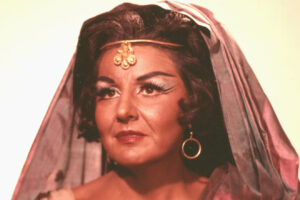

For tonight’s distinguished premiere of Lucia di Lammermoor at the Algonquin Opera, there would in fact be far more blue hairs in the audience than blue collars; there would be diamonds, organza, cloche hats, Rykiel fedoras, antique ivory fibulas, Yamamoto watches; there would be silk-embroidered chasubles.
This was the summit, the peak, the ne plus ultra of gala events, and attending—nay, even getting taken off hold by the surly demoiselles at the Algonquin box office call center—would be sited well beyond the wildest dreams of any member of the third estate.
On the Aeolian winds of applause, kilted director Sir Pedro MacMillan had just publicly found his seat in the front row. Then, ovation shattered the theatre for a second time as replacement Maestro Sal Piesessenbitz shinnied up the podium and faced the prosperous masses.
A smile crept across the conductor’s lips; he wasn’t expecting such support. He knew that mere hours earlier outside the venue, a throng of angry picketers had taken to the plaza, swarming and slithering like livid crocodiles.
BRING BACK JEROLD
EVERY DIRECTOR DESERVES DUE PROCESS
WE’RE HUNGRY HUNGRY FOR JUSTICE
I LOVE HOTDOGS
Brandishing a megaphone near a bronze statue of Aureliano Pertile, conservative former mayor of New York City Bob Piccomini had delivered an oration about the “moral decay of the ‘catch a predator’ movement,” and bemoaned the “witch hunt ravaging the fabric of our fair city’s artistic community.”
Deeply rattled and uncomfortable was what these scenes had made Piesessenbitz, even amnestied within the opera house. This audience steadied him, however. He crossed himself and turned uneasily to his instrumentalists.
A hush spread across the crowd as Donizetti’s foreboding minor horn overture portended the Scottish bloodbath to come in Act 3. The gilded curtain furled like a fern, revealing the production’s sumptuous sets—That splendid replica of Glamis Castle! Those Lammermuir Hills!—and generating yet another wave of oohs and enthusiastic applause.
Leaping across the stage in 18th century regalia, Lord Enrico Ashton, inhabited by striking Swedish baritone Pita Larssen, informed his guard that he was looking for sly intruder Edgardo di Ravenswood. Moments later by the fountain, Enrico’s sister, played by soprano Katarina Nippelnaya, awaited him as well.
Nippelnaya was in top form that night, following a full week of vocal rest and a diet of lemon water and vegan blinis. Her “Regnava” went without a hitch, though critics would generally find fault with her tentative movements in the plush tartan hoop skirt she’d been allotted. (“Vot otter gobbledy boolsheet,” the Parakeet from Petersburg would mutter to herself, collapsing her publicist’s printed review in her hand.)
The audience was already well informed by the opera’s second act of the cast’s infamous “No Act Two Before the Shwo” hashtag movement; the players had superstitiously refused to rehearse the “Chi mi frena in tal momento” sextet. This proved a mistake when the star soprano, ironically the most seasoned of the entire cast, forgot her entrance and then resorted to improvised dodecaphonic fioritura for the first two minutes of the opera’s emotional climax.
The diva’s fellow performers, confused by her antics, looked on in horror as she swung wildly into her head voice, then catapulted into falsetto and began chirping.
But the production’s key moment, the Mad Scene following Lucia’s grisly murder of her groom Arturo, was by all accounts a triumph of the highest order.
A dark, terrifying “Il fantasma ne separa,” which positively short-circuited Nippelnaya’s lower range, stunned the audience and left her fanatics alternately swooning and gasping for air. Here was a true killer, one who’d successfully vanquished her virginal image, who was now reborn, ready to find new life outside of herself, ready to strike fear in the men who’d at once propped up her sanity and imprisoned her in it.
Speckled with blood, Nippelnaya delivered her mad cabaletta in genuflecting fashion to the floor, looking up only for her duet with the glass harmonica.
The audience was entirely transfixed by the vision. No one noticed the exiled, legless director who was now quietly wheeling himself down the left aisle of the auditorium.
Or the weapon he held in his hand.
Illustration by Ben A. Cohen

























Comments